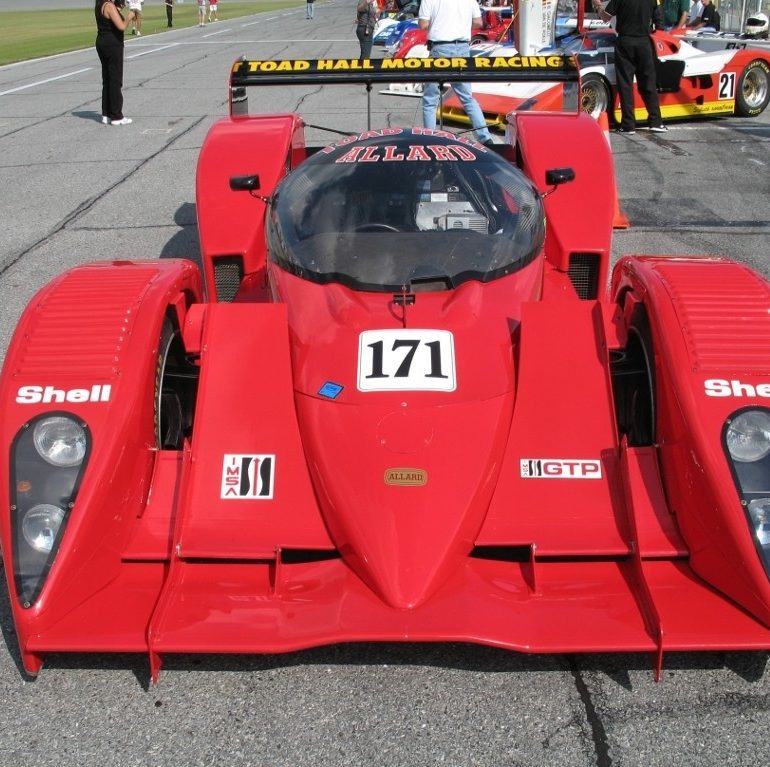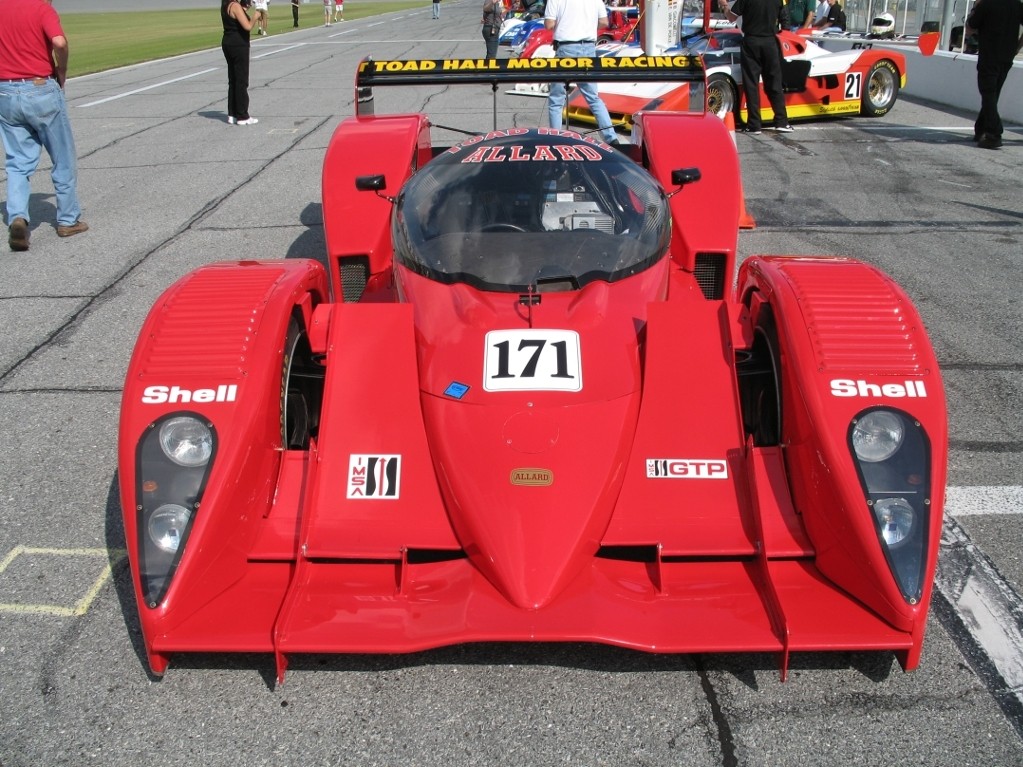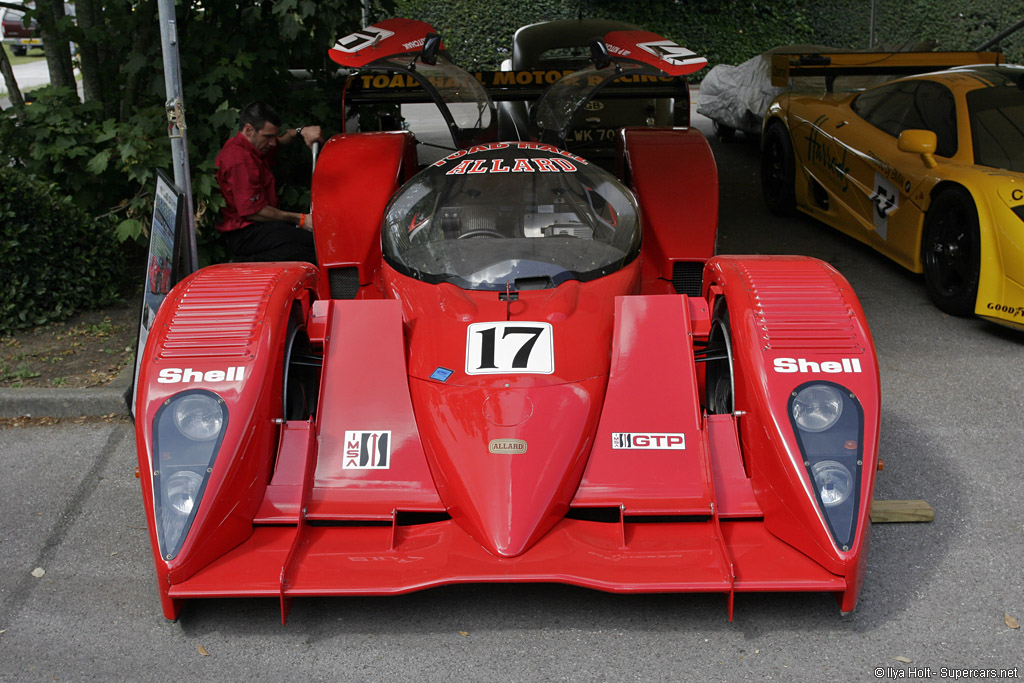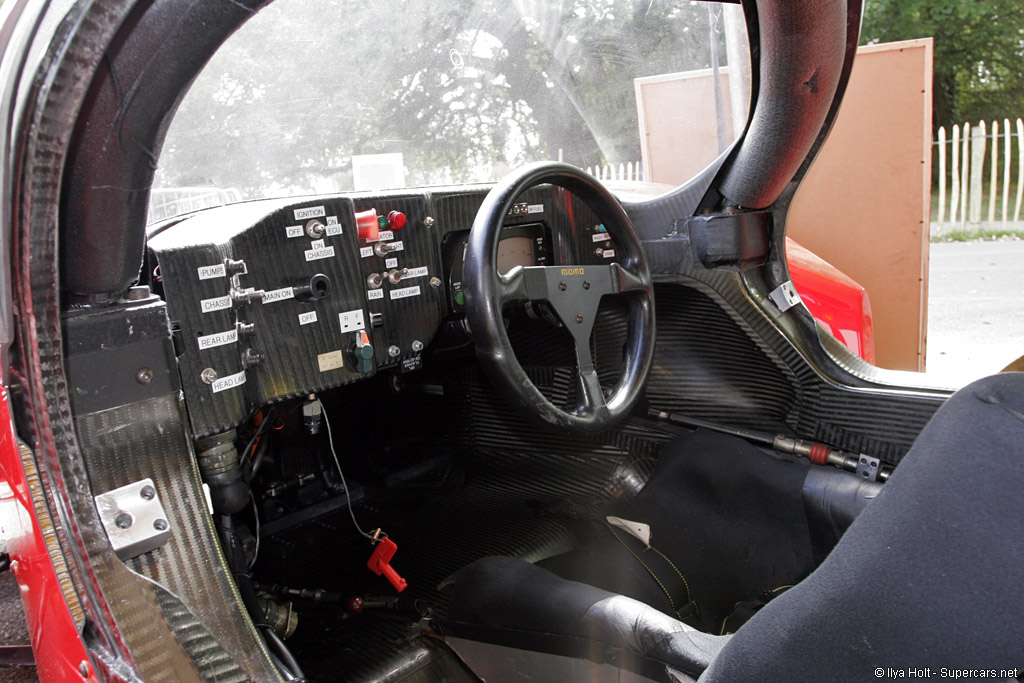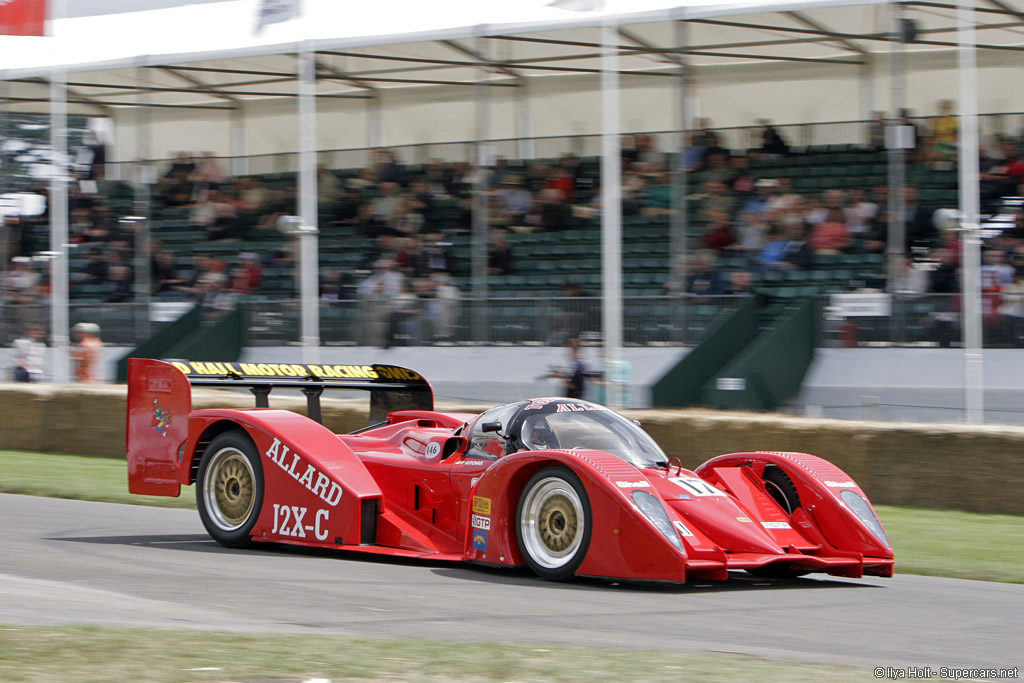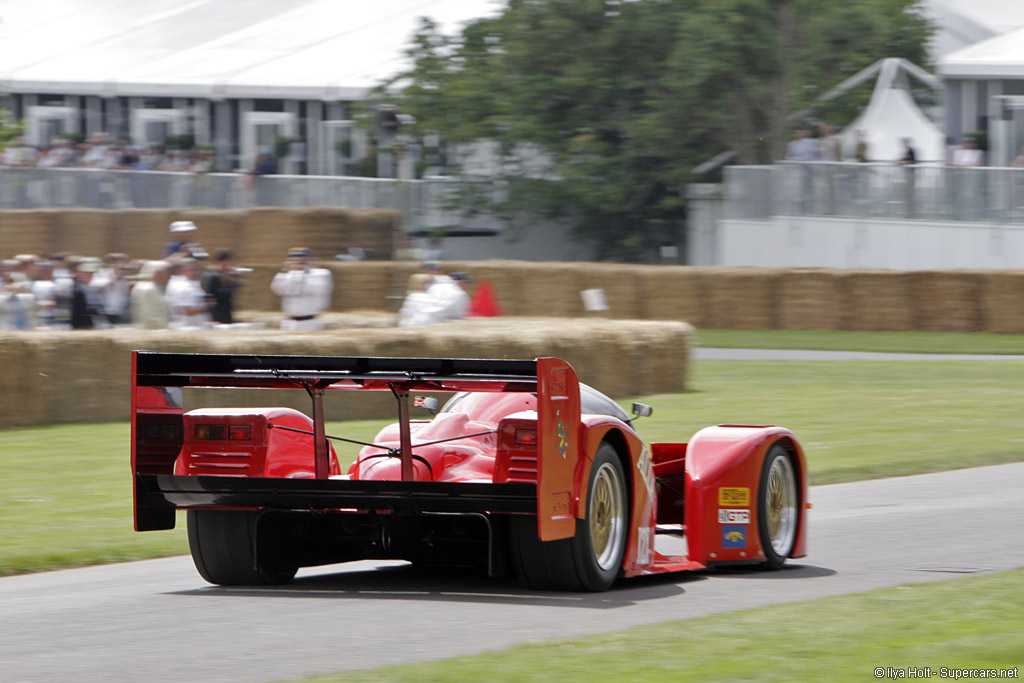1992 Allard J2X-C
In the 1980s, Chris Humberstone got the rights from Alan Allard, the son of Sidney Allard to use the family name on a new line of racecars. His focus was the well established Group-C racing. Unfortunately, only a single copy of their revolutionary racecar was made.
Unlike typical Group-C design, the new J2X-C used an especially narrow cockpit, a tight round canopy, detached fenders, a very low overall height and large front wing. This wing sat in between the front fenders and central tub to eliminate front understeer and was situated low as to not disturb the air going to the rear wing.
All the aero devices on the J2X-C were adjustable, and the rear wing had two flaps, one at cockpit height and another down by the diffuser to adjust the flow of air under the car. The rear flap was somewhat exhaust activated as it exited near the diffuser. Aerodynamicist John Iley thought all these devices helped the car produce almost 5500 lbs (2494 kgs) of down force at 150 mph (241 kph), producing a theoretical 9778 lbs (4435 kgs)of down force at 200 mph (320 kph)!
With all the down force came unwanted drag, so the J2X-C needed a very powerful engine and power steering – but neither was fitted.
Like historic Allards this one was designed to accept a multitude of engines and be sold as a customer car. Thus the design was supposed to use a quick-change transmission with the suspension directly attached. The entire chassis was made as a carbon fibre monocoque, with a separate composite rear sub frame and integrated steel roll cage.
Unfortunately, the J2X-C never made it out of the prototyping phase, and initial tests proved that a larger engine was needed. When the intended Group-C category ended, the only option was GTP IMSA racing. Once that didn’t materialize, Allard Holdings was sold to the UK and the sole car was prepared for LeMans.
At the test days, as much down force as possible was removed from the car and lights were fitted to the front and rear for the first time. Down the Mullsanne Straight only 172 mph was achieved and the idea of contending LeMans was abandoned. It raced only once afterwards in IMSA GTP at Laguna Seca and finished ninth overall.
Story by Supercars.net
Bibliography
Kinsella, David. Allard. Haynes Publishing, 1977.
Michael J. Fuller. The Allard J2X Story. www.mulsannescorner.com.
In Detail
| submitted by | Richard Owen |
| engine | Nicholson-McLaren Ford DFR V8 |
| position | Mid Longitudinal |
| aspiration | Natural |
| valvetrain | DOHC, 4 Valves per Cylinder |
| displacement | 3494 cc / 213.2 in³ |
| bore | 90 mm / 3.54 in |
| stroke | 68.7 mm / 2.7 in |
| power | 432.5 kw / 580 bhp |
| specific output | 166.0 bhp per litre |
| bhp/weight | 674.42 bhp per tonne |
| torque | 542.33 nm / 400 ft lbs |
| body / frame | Carbon Fibre & Aluminum Honcomb Monocoque w/Rear Composite Subframe |
| driven wheels | RWD |
| front tires | BF Goodrich or Goodyear |
| rear tires | BF Goodrich or Goodyear |
| front brakes | Carbone Industries Discs w/Brembro Calipers |
| f brake size | mm / in |
| rear brakes | Carbone Industries Discs w/Brembro Calipers |
| r brake size | mm / in |
| steering | Unassisted Rack & Pinion |
| curb weight | 860 kg / 1896 lbs |
| wheelbase | 2850 mm / 112.2 in |
| front track | 1620 mm / 63.8 in |
| rear track | 1582 mm / 62.3 in |
| length | 4799 mm / 188.9 in |
| width | 2000 mm / 78.7 in |
| height | 920 mm / 36.2 in |
| transmission | Modified Leyton-March F1, 6-speed Sequential |
| gear ratios | :1 |
| top speed | ~276.8 kph / 172 mph |
| designers | Hayden Burvill, John Iley (Aerodynamics), |


